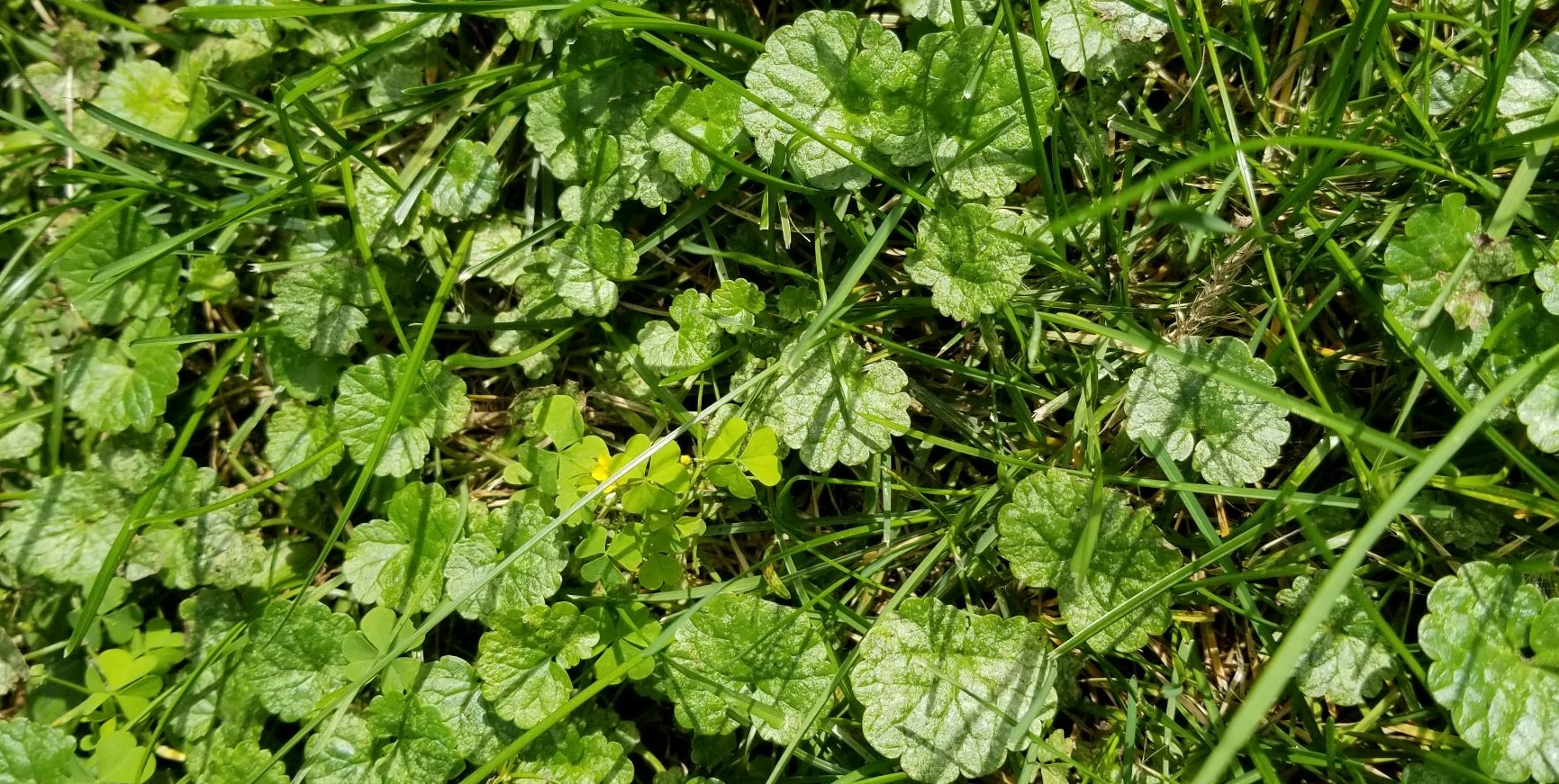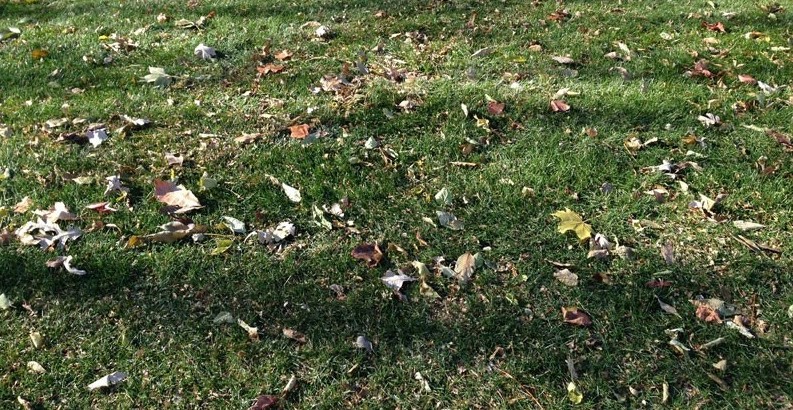Welcome to the latest issue of the Home Lawn Care Newsletter from UMN Turfgrass Science! We will provide monthly updates to address all your lawn care tasks at the times when you need to know.
Oct 14, 2022: Issue 6
Creeping Charlie is enemy number one
The hands-down winner for most frustrating weed this year was creeping Charlie. Creeping Charlie has extensive stolons, which are horizontally spreading above-ground stems. When you pull creeping Charlie or try to dig it out, you're often encouraging the remaining stolons to send up new leaves.
Natural weed treatments are not effective to kill this weed because they don't kill the root. Systemic, synthetic herbicides will kill the plant, but there's more to be done. For best results, you'll need to reduce the shade conditions where it's growing for turfgrass to be successful. Follow the links below for more detail on appropriate chemical treatments for creeping Charlie removal, and more details on the plant's value in the environment.
Creeping Charlie from UMN Extension
Controlling creeping Charlie from University of Wisconsin
Creeping Charlie: Management and value to pollinators
Creeping Charlie (Ground Ivy) from UMN Extension
To mulch or not to mulch?
Adding organic matter and fertilizer is part of keeping it healthy. During the summer, we encourage folks to leave clippings on your lawn. Now in the fall, we're encouraging you to mulch (mow) your leaves into the lawn. Mulched leaves are about 2% nitrogen, and provide other nutrients such as phosphorus and potassium. This combination of lawn clippings and mulched leaves can replace one of your fertilizer applications per year. Mulching leaves into the lawn also serves to keep them out of lakes, ponds and rivers.
There are a few other things to keep in mind if you decide to mulch. It's easiest to mulch when the leaves are dry. It's best to mow frequently so that there aren't too many leaves being added at once. If you can't see any grass under the leaves before you start, you've got too many leaves to mulch. You can bag those, then start mulching with the next batch. Last, make sure the leaves are mulched into very small pieces. Otherwise, they can shade out the grass below them.
Do you really need to rake all your leaves?
Yard trimmings from the US EPA
Should I mulch or bag my leaves this fall?
Skip raking this fall by Angie Hong, Washington Conservation District
Is there anything finer than fine fescues for low input lawns?
If you're interested in ways to use less water and fertilizer and also do less mowing, UMN Extension has new resources for you. Learn about the different types of fine fescues, how to choose the right ones for you, how to establish a fine fescue lawn, and how to maintain it. Check out these new web pages for the latest and greatest information about this Minnesota favorite lawn.
Planting and maintaining a fine fescue lawn from UMN Extension
Can Dutch white clover lawns really replace turfgrass as a lawn in Minnesota?
Lots of folks are asking about lower input lawns this year, including the use of Dutch white clover for an all-clover lawn. We've seen the benefits of clover in bee lawns, but is it great on its own?
Certainly clover is low input for watering, mowing, and fertilizing. It crowds out weeds, too, but there are some downsides. It's not as durable under regular foot traffic. It is a short-lived perennial, and you'll likely need to reseed periodically. It will also spread easily, so maintaining edges and making sure it's not creeping into your neighbor's lawn could be challenging.
The best choice for using Dutch white clover in lawns in Minnesota is to mix clover with fine fescues. These grasses and clover both are low input. The clover will bloom at the height the grass is mowed and the grass will add traffic tolerance to the lawn.
Are you considering the differences between Dutch white clover and microclover? If you're looking for bee-friendliness, the microclover may not produce as many blooms compared to Dutch white clover. It won't tolerate shade, either. Dutch white clover is likely your best option.
Using clover for lawns??? from Purdue University
Lawns and microclover from University of Maryland
Planting and maintaining a bee lawn from UMN Extension
Planting clover as overseed in a Minnesota backyard from UMN Extension
White clover from UMN Extension
Time to put your lawn to bed
As part of the video series, "Watering Wisdom'', Ryan Schwab, a researcher from the UMN Turfgrass Science team, presents information about how to winterize your lawn.
We are getting close to the time of year when dormant seeding can be done. Check out our last newsletter if you would like to learn more.
September 2022 | Lawn Care Newsletter
Event
The UMN Turfgrass Science team will be at:
Northern Green in Minneapolis on January 10-12, 2023
Research Highlights
Snow and ice season is coming, which means salt on roads and sidewalks. But as many folks have experienced, turfgrasses can be damaged by salt. Read about the work the UMN Turfgrass Science team has done on salt-tolerant turfgrasses.
Salt-affected roadside grasses with Dr. Eric Watkins a podcast from Field, Lab, Earth
Review of cool-season turfgrasses for salt-affected roadsides in cold climates by Josh Friell and Eric Watkins
Making roadsides greener by selecting salt tolerant turfgrasses by Michael Laskowski
Salt-tolerant roadside grasses: Does anything actually survive? by Matt Cavanaugh

